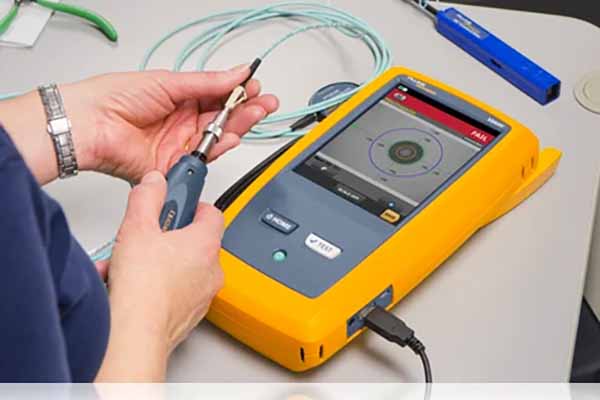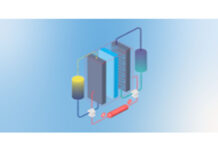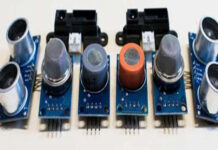The fiber optic test equipment market is to be worth US$ 923 million in 2023 and is expected to reach US$ 1,779.9 million by 2033, with a 6.8% CAGR between 2023 and 2033.
According to market research experts at FMI, the size of the fiber optic tools market accounted for US$ 702.2 million in 2018 to US$ 865.1 million in 2022.
The adoption of fiber optics is expanding as wireless technology is increasingly adopted in many end-user sectors. One of the key industry trends gaining pace in the fiber optic test equipment market over the next few years is going to involve the expanded adoption of fiber optic test equipment as a result of the increasing acceptance of wireless technologies.
Increasing need opens up significant opportunities for the fiber optic test equipment industry
- In 2022, fiber optic test equipment sales were worth US$ 865.1 million.
- Given the strong demand for tier-2 certification criteria and rising investment in 4G/5G rollout, optical time domain reflectometers (OTDR tester) may continue to be favored equipment.
- The key factors driving the fiber optic test equipment demand are increasing data usage rates and network bandwidth expansion.
Telecommunications service providers may continue to be the principal end-user until 2030.
The advent of 5G technology may speed up development, which could lead to an increase in demand for fibre optic test equipment in the upcoming years. Because of the ongoing construction of the infrastructure necessary to support 5G technology, governments in developing nations like China and India are supporting testing operations in telecom base stations.
High-speed Data Transfer Demand May Drive Market Expansion
The importance of fibre optic tools for various network mediums has grown as the telecommunications industry around the world accelerates its shift to fibre optic cables to achieve high-speed data transfer. These tools are used for inspection, on-site troubleshooting of network systems, as well as research and development stages across the industrial sector.
To maintain link quality as connectivity speeds rise, cable performance becomes increasingly crucial, opening the door for a variety of fibre optic cable types.
Numerous fibre optic tool companies will probably look into cutting-edge fibre optic solutions over the coming years, including potential applications in the maritime and healthcare sectors.
Governments all around the world are currently undertaking initiatives like fiber-optic networked smart city projects to ensure the proper operation of Internet of Things (IoT) technologies.
As long as the present trends that are fueling the current boom in fibre optics persist, the global market for fibre optic test equipment is expected to grow significantly over the next years, offering several lucrative prospects.
Advancements in Connectivity and Telecom Industry Accelerate the Market Growth
The expansion of fixed broadband subscriptions and Long-Term Evolution (LTE) network penetration has lately picked up speed, and market trends for fibre optic tools are anticipated to remain strong over the course of the projected period.
According to FMI, mobile operators spend roughly US$ 160 billion in 2020 to reach their 5G networks. Moreover, till 2024, fixed broadband connection growth is likely to increase by 3% annually.
Fibre optics have made it possible to deploy and develop 5G wireless connectivity. Heavyweights in the telecom sector rely on the countless kilometers of state-of-the-art fibre optic cables that link 5G devices around the globe.
Segmentation Outlook
Optical Time Domain Reflectometer Enthusiasts to Turn a Profit
Since they are currently commercially accessible for use across the whole wavelength range, optical time domain reflectometers (OTDR testers) may continue to be a significant source of income for market participants.
An OTDR tester, which provides sophisticated diagnostics to pinpoint the point of failure that could impede network operation, is also used to maintain the performance of fibre facilities.
OTDRs continue to rule the market for fibre optic test equipment due to their relatively higher accuracy in optical power meter (OPM) readings. These items presently account for around 35% of the market stack for fibre optic testing equipment, and through 2033, that share is expected to grow at a strong CAGR.
By including distinctive characteristics with their products, fiber optic test equipment manufacturers are placing a higher priority on product development. The fiber optic test equipment manufacturers are making significant investments in providing customers with a wide range of technology for uses such as field monitoring, measurement, and maintenance.
Product Innovations Keep Being Essential for Fibre Optic Test Equipment Manufacturers to Retain Economic Viability
Product Launch
- Anritsu – Anritsu has unveiled the Master Pro MS2090A, a handheld spectrum analyzer with a range of up to 54 GHz and real-time monitoring for a range of up to 100 MHz, to address current and potential use cases across diverse industries.
- AFL – Two new Fujikura splicer models have been released by the firm, which have been designed to maximize productivity and minimize downtime for routine maintenance. They include ergonomic improvements along with advancements to automate operations.
- Fluke Networks – The FI-3000 Fiber Inspector Ultra end-face inspection camera from Fluke Networks has been introduced. The product makes contaminant detection possible for fiber optic professionals. Technicians using the solution can also quickly see the functioning of the fiber end-face in real-time on their smartphones and use the gesture-based user interface to zoom in on certain fibers or perform pass/fail tests in a matter of seconds.
- AFL – For network and enterprise operators as well as telecom service providers operating in environments ranging from LANs to data centers, metro areas, and core networks, AFL has developed ROGUE OLTS Certifier.
- Yokogawa – To minimize casualties from high-temperature heat, such as equipment failures brought on by heat and equipment anomalies, Yokogawa has developed fiber optic heat detectors for maintenance purposes.
Key Players
- Anritsu
- Keysight Technologies
- Viavi Solutions
- EXFO
- National Instruments
- Yokogawa Electric















